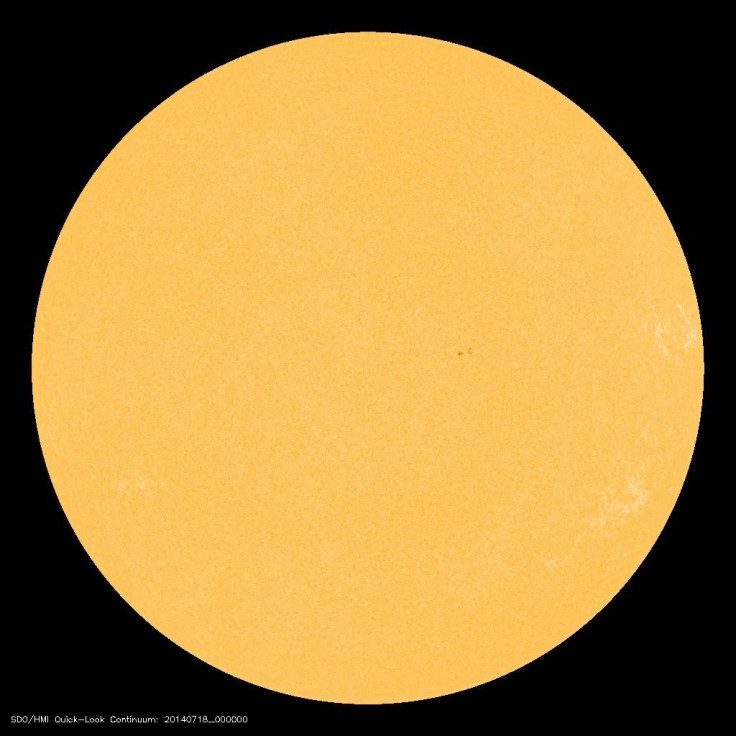Where Have the Sunspots Gone? Spotless Sun Reveals 'Big Quiet' Event

For the last few days, telescopes aimed at the sun have detected very few sunspots experiencing an unusual phenomenon dubbed a "Big Quiet".
The event marks the absence of sunspots during what is supposed to be a heightened period of magnetic activity on our sun, which Swinburne University astrophysicist Dr Alan Duffy called a "very weird" development.
"Sunspots can change all the time, but when you should be seeing many dozens at any one point of time, it's quite strange that we're not seeing any at all," Duffy told the Sydney Morning Herald. "We don't have any idea why that is."
Sunspots are temporary phenomena on the photosphere of the sun that appear visibly as dark spots, compared to surrounding regions.
They are the region of the sun where solar activity originates when material is ejected into space following solar flares, sudden flashes of brightness and coronal mass ejections (CMEs).
Sunspots appear darker to us as they are caused by highly concentrated magnetic fields that are slightly cooler than the surrounding surface of the sun. Solar flares and CMEs occur when built-up energy is released.
The spots are one gauge of a solar cycle, an approximately 11-year period of above average or below average magnetic activity. Currently, the sun is in a maximum period, so observations of sunspots and solar flares should be more common.
Yet an image taken by Nasa's Solar Dynamics Observatory shows a distinct absence of sunspots, with just a small dot of brown just right of the centre where a small sunspot appears to be developing.
Speaking to the LA Times, physicist Tony Phillips, who writes about solar activity on his website Spaceweather.com, said it was not altogether that usual to have a Big Quiet event.
"It is weird, but it's not super weird," said Phillips. "To have a spotless day during solar maximum is odd, but then again, this solar maximum we are in has been very wimpy."
Phillips explained that we were currently in the weakest solar maximum to have been observed in the space age, so a spotless sun was not all that uncommon.
In August 2011, astronomers witnessed a sun entirely free of sunspots, even though that year experienced relatively high solar activity with several x-class solar flares.
In that case, Phillips said the spotless sun was a "temporary intermission".
"It all underlines that solar physicists really don't know what the heck is happening on the sun," Phillips said. "We just don't know how to predict the sun, that is the take away message of this event."
Alex Young, a heliophysicist at Goddard Space Flight Center, told Inquisitr.com: "We've only been observing the sun in lots of detail in the last 50 years. That's not that long considering it's been around for 4.5 billion years."
© Copyright IBTimes 2025. All rights reserved.






















